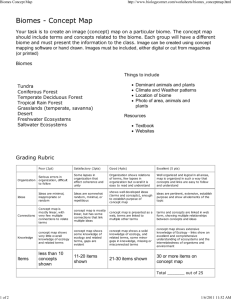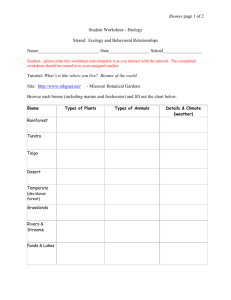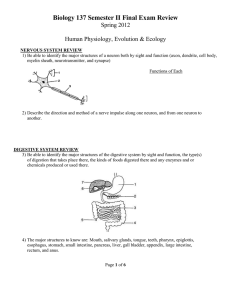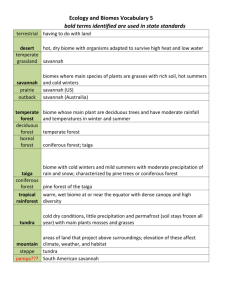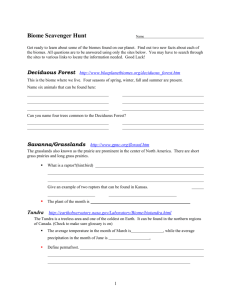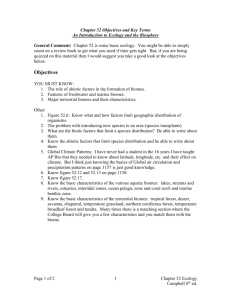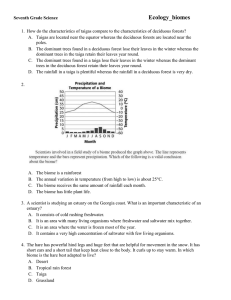Name
advertisement
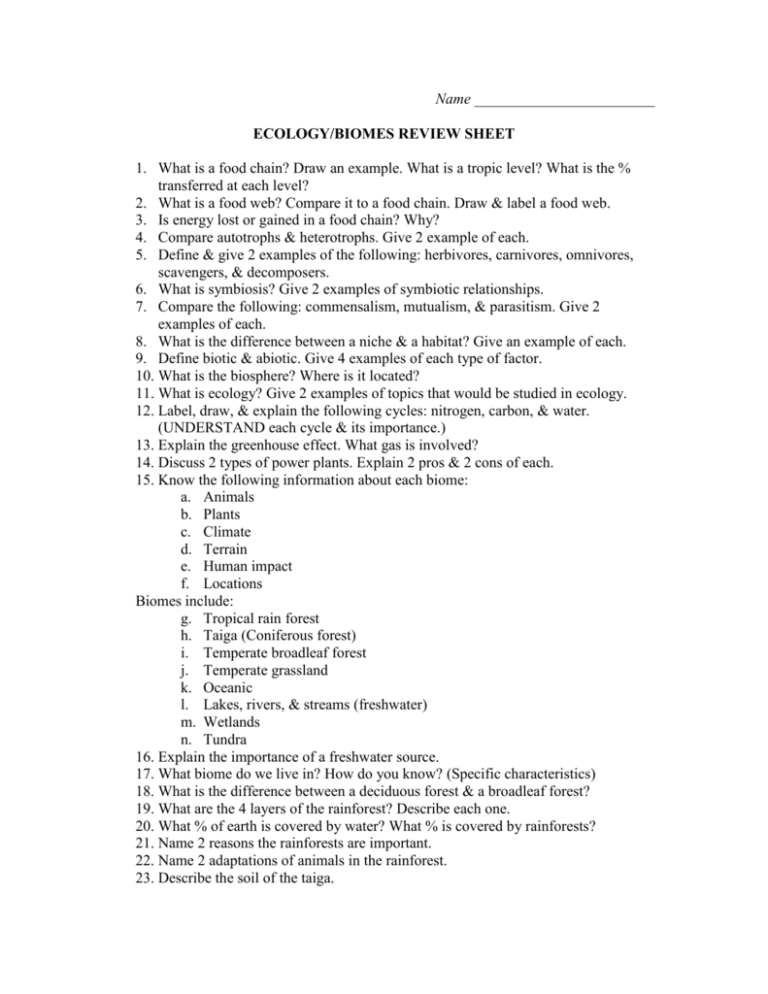
Name ________________________ ECOLOGY/BIOMES REVIEW SHEET 1. What is a food chain? Draw an example. What is a tropic level? What is the % transferred at each level? 2. What is a food web? Compare it to a food chain. Draw & label a food web. 3. Is energy lost or gained in a food chain? Why? 4. Compare autotrophs & heterotrophs. Give 2 example of each. 5. Define & give 2 examples of the following: herbivores, carnivores, omnivores, scavengers, & decomposers. 6. What is symbiosis? Give 2 examples of symbiotic relationships. 7. Compare the following: commensalism, mutualism, & parasitism. Give 2 examples of each. 8. What is the difference between a niche & a habitat? Give an example of each. 9. Define biotic & abiotic. Give 4 examples of each type of factor. 10. What is the biosphere? Where is it located? 11. What is ecology? Give 2 examples of topics that would be studied in ecology. 12. Label, draw, & explain the following cycles: nitrogen, carbon, & water. (UNDERSTAND each cycle & its importance.) 13. Explain the greenhouse effect. What gas is involved? 14. Discuss 2 types of power plants. Explain 2 pros & 2 cons of each. 15. Know the following information about each biome: a. Animals b. Plants c. Climate d. Terrain e. Human impact f. Locations Biomes include: g. Tropical rain forest h. Taiga (Coniferous forest) i. Temperate broadleaf forest j. Temperate grassland k. Oceanic l. Lakes, rivers, & streams (freshwater) m. Wetlands n. Tundra 16. Explain the importance of a freshwater source. 17. What biome do we live in? How do you know? (Specific characteristics) 18. What is the difference between a deciduous forest & a broadleaf forest? 19. What are the 4 layers of the rainforest? Describe each one. 20. What % of earth is covered by water? What % is covered by rainforests? 21. Name 2 reasons the rainforests are important. 22. Name 2 adaptations of animals in the rainforest. 23. Describe the soil of the taiga. 24. What is carrying capacity? How is it determined? 25. How do growth rate & death rate effect population dynamics? 26. What is logistical growth? What does the curve look like? 27. What is exponential growth? When does it occur? What type of population is growing exponentially? How 28. What is r-selected? Give an example. What is K-selected? Give an example. 29. How do trees allow the abundance of species to live in the Taiga? 30. What is the difference between photic & aphotic? How would animal life differ in these areas? 31. What are the levels of organization, from an ecological standpoint? Describe each level. 32. What is species richness? How does it differ from relative abundance? Relate biomass to these terms. 33. Discuss the competitive exclusion principle. Explain an example. 34. What is a keystone species? Give an example & discuss its role. Is this the same as a dominant species? Why or why not? 35. Discuss 3 types of defenses that plants have & 3 types of defenses that animals have. 36. Compare Batesian & Mullerian mimicry. Give an example of each. 37. Discuss, in your own words, 2 ways that humans are negatively impacting our environment. Discuss one way that we are positively impacting the environment.
